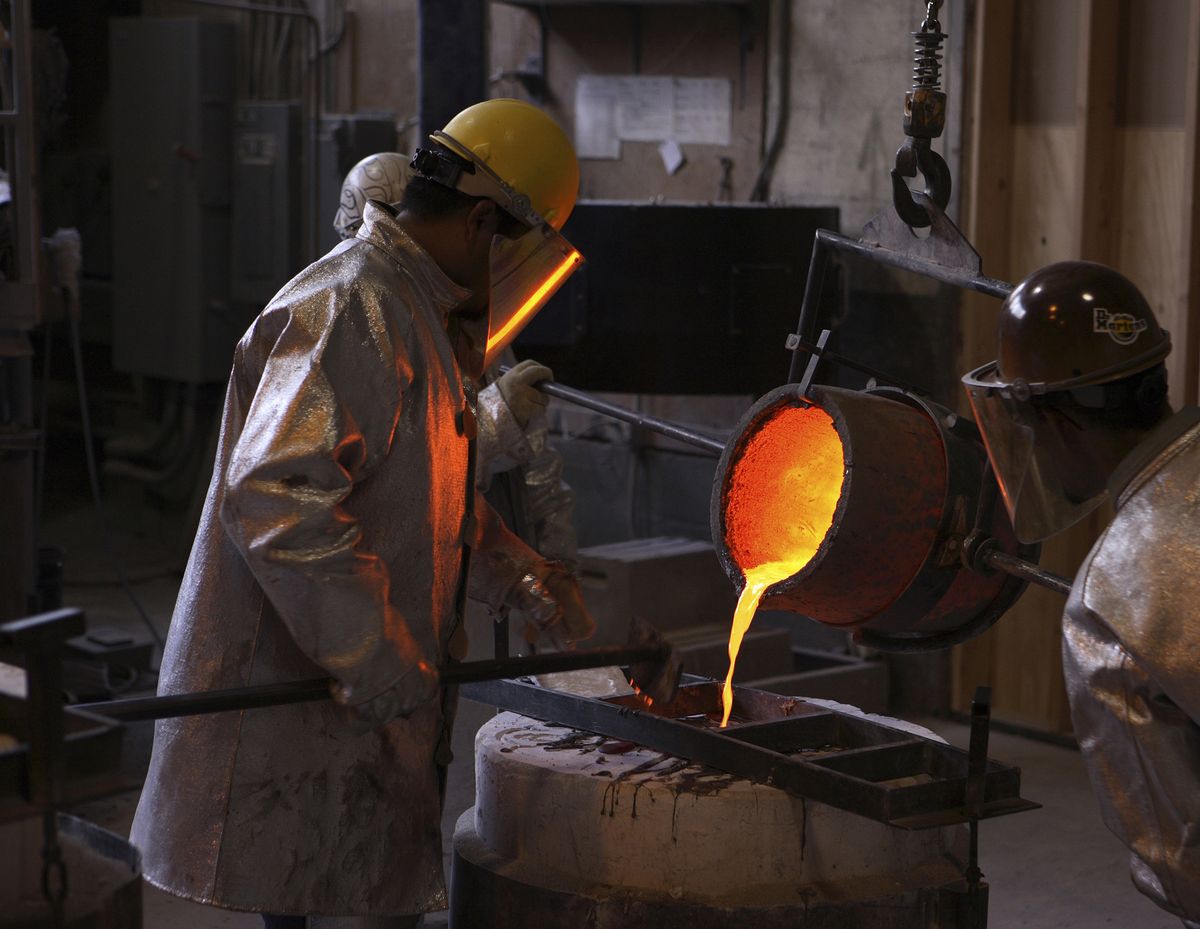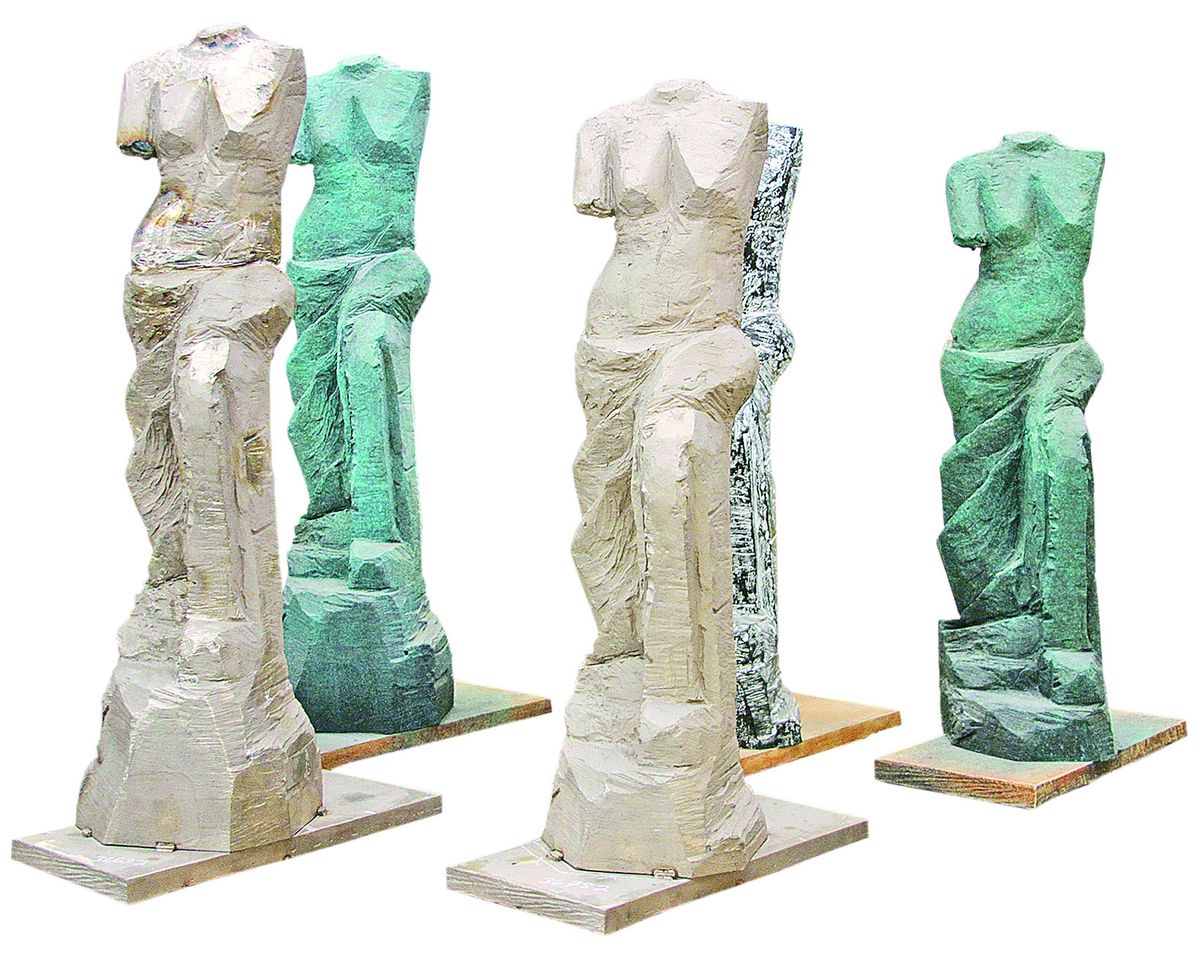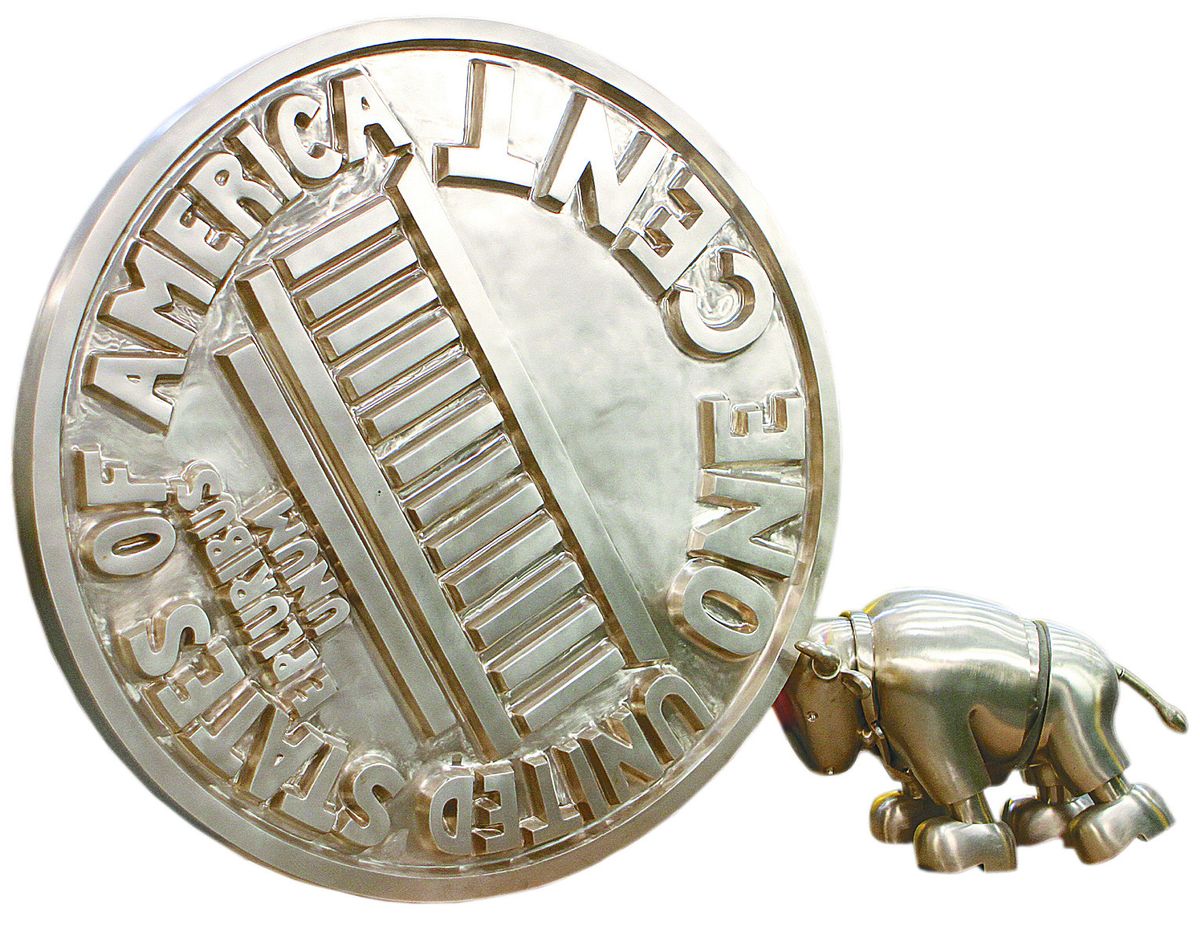Walla Walla Foundry helps sculptors bring imaginations to life
“Venuses,” by renowned pop artist Jim Dine.
Heat emanating from molten metal poured at the Walla Walla Foundry makes a sweltering summer day seem cool.
But the result of that 2,000-degree work is well worth the sweat.
The foundry is known for its expertise in bringing to life the contemporary visions that spill from sculptors’ imaginations.
“From concept to completion, the foundry offers a range of services to assist artists in all phases of their project,” says owner Mark Anderson.
A visit to the foundry at 405 Woodland Ave. is a visual adventure in contemporary art. The gallery at the foundry features the work of unknown, as well as renowned artists.
One wall features a series of five tall paintings by nationally known pop artist Jim Dine, each depicting a different Disney character. Another wall is covered by two giant paintings by local artists.
The foundry offers a video tour in its gallery, which is open from 8 a.m. to 4 p.m. Monday through Friday. Admission is free.
In the courtyard is a larger-than-life sculpture of a horse by Montana artist Deborah Butterfield that, at first glance, looks like it’s made of driftwood. In reality, it’s a bronze.
Whether the foundry’s technicians are working on individual pieces or monumental commissions, Anderson says he strives to provide the facility, equipment and technicians necessary to realize the artist’s vision.
“I started this business on a bootstrap 30 years ago in a small 1,000-square-foot warehouse, without borrowing any money,” he says. “I just worked three jobs at the same time to keep us afloat.
“Then two years after I opened I got a call from Jim Dine, who wanted some casting done.”
The New York-based artist came to Walla Walla and liked what Anderson’s foundry did with his sculptures. He liked the town, too, and decided to make it his part-time home.
With respected artists like Dine and Butterfield as customers, the foundry flourished and word spread in the art world.
“I had no idea we would grow like this,” Anderson says. “But it’s always been important to me that we maintain expert craftsmanship, and that’s what seems to have paid off.”
He started the foundry in 1980 with just two employees. It grew to about 30 during its first two decades. Today he employs 63 people.
It’s difficult to determine how many sculptures the foundry cranks out each year because they vary in size dramatically, Anderson says.
“Another way to look at that is to say we pour about 35 tons of bronze a year,” he says.
As for missing a deadline for completion of a project, Anderson says, “I most likely have blocked out of my mind if we have missed a deadline, but I do know that if we are shipping to a gallery for an exhibition we have never been the cause of delaying that exhibition.”
“Mark is an insightful person who provides incredible fabrication and installation services to artists and communities,” says Alice Taylor, the program manager for Art in Public Places with the Washington State Arts Commission.
“Mark’s wonderful staff supports the vision of the artist and provides the finest quality of work. We are fortunate to have him and his foundry in the state.”
Watching foundry technicians melt the metal, pour it into the molds, smooth out the flaws of cooled pieces then weld them together so the seams are smooth is as fascinating as the end result is to gaze upon.
“There really is no such thing as a perfect casting,” Anderson says. “We just make it appear perfect.”
The foundry has cast sculptures that sit in corporate board rooms, cruise ships, hotels, private homes and outdoor public art venues throughout the world.
A 30-foot-tall bronze Pinocchio by Dine stands in the city of Boras, Sweden.
Earlier this month, the foundry was working on a Tom Otterness commission that includes several whimsical sculptures of various sizes and shapes.
The New York artist was hired by the city of Connell, Wash., to create bronze figures and stone tables and benches for its downtown. The pieces are scheduled to be installed for an unveiling Sept. 11.
The $431,584 project is the second phase of a $620,584 Art in Public Places Program, which was initiated by the state Legislature in 1974. The law allocates one-half of 1 percent of the state’s capital construction budget for public artwork.
The money for the Connell project came from the recent $179 million expansion of the Coyote Ridge Corrections Center.
“Being at the foundry opened my eyes to the extensive process behind each bronze sculpture,” says Melissa Kelly, a Connell resident who served on the art selection committee for the project. “I had no idea that the process was so complex.
“These sculptures could have been poured in New York City where Tom (Otterness) is from, but he chooses the Walla Walla Foundry for many of his works. That says a lot about the quality of work the foundry does.”
Anderson, who has an art degree from Whitman College in Walla Walla, created and sold some sculptures as a young man, but it was the foundry that sparked his true passion.
“I’ve always been all about contemporary art,” he says. “I discovered as a young man that I loved this side of creativity instead of creating my own work.”
And he’s never regretted choosing the path of the foundry, because there’s just as much fulfillment that comes in assisting other sculptors in creating artistic magic.



